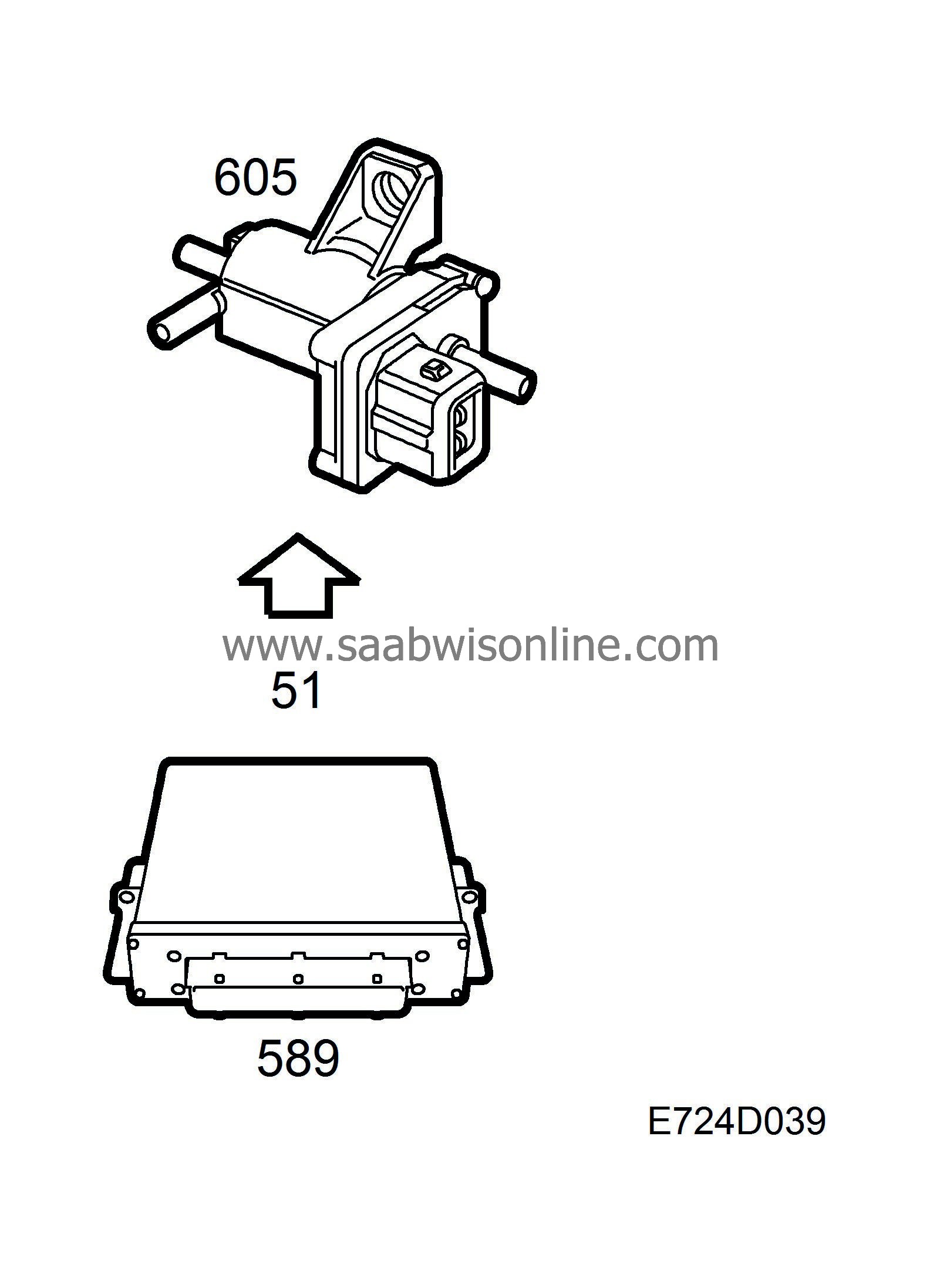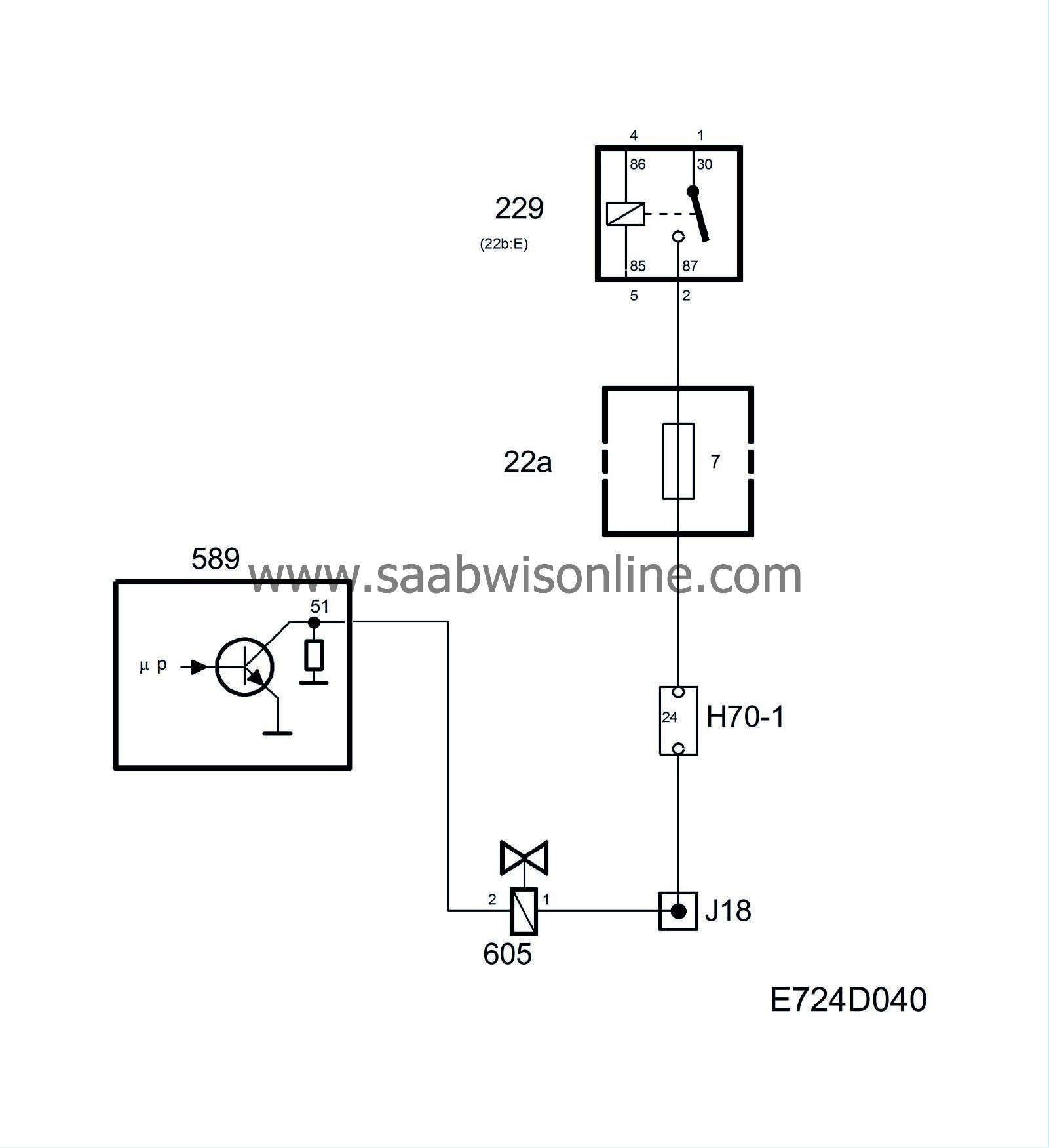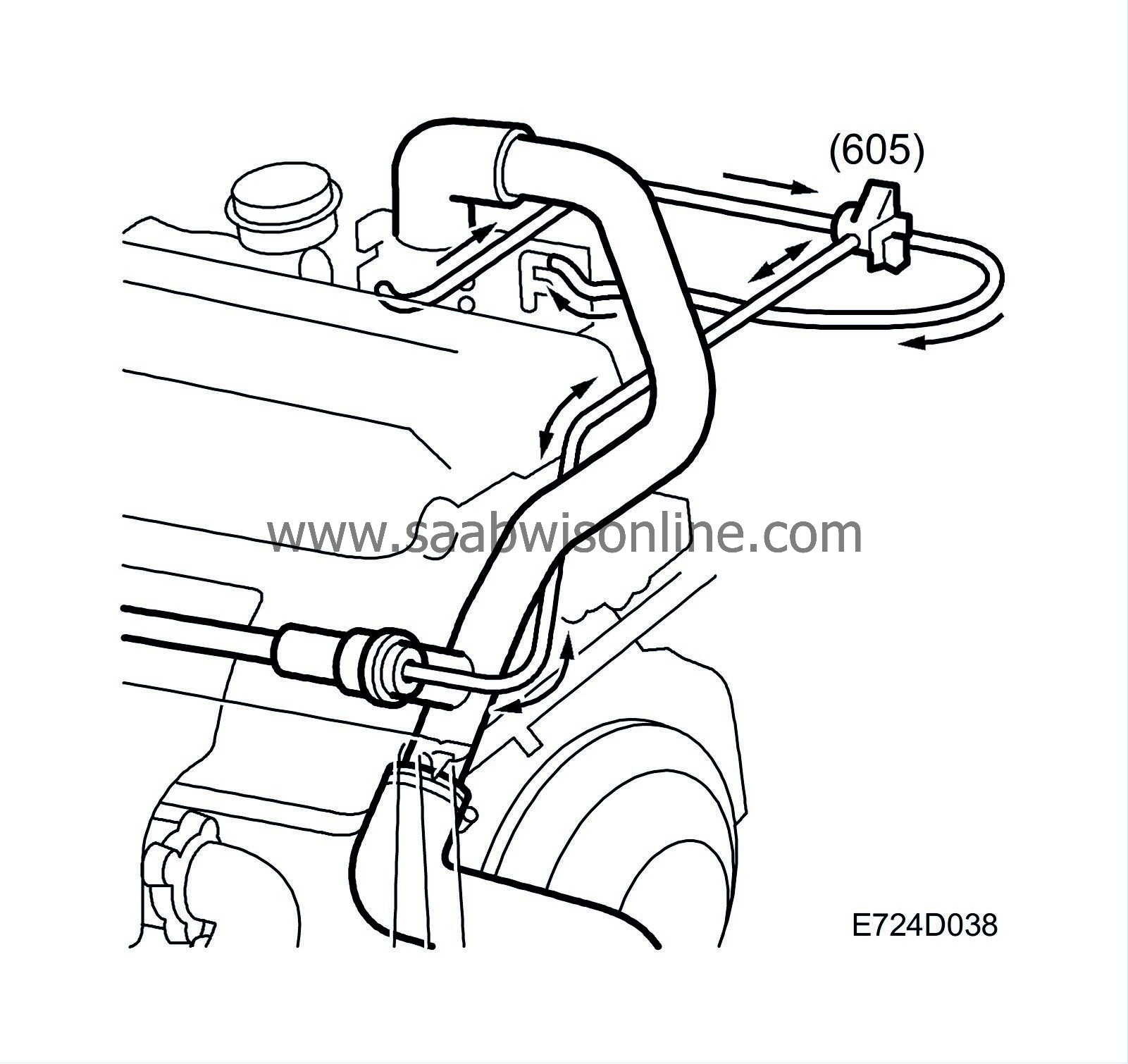Bypass solenoid
| Bypass solenoid |
To prevent the phenomenon described above, a bypass valve is fitted between the compressor outlet and inlet. The valve is opened by negative pressure from the intake manifold.
When de-energized, a solenoid valve couples the bypass control line to the intake manifold after the throttle. When the accelerator pedal is released, the negative pressure will open the bypass valve and couple together the inlet and outlet of the compressor. This process will prevent the pumping effect. During acceleration, the solenoid valve will operate and the control line will be connected before the throttle. This ensures that the bypass valve is properly closed during normal driving conditions.
The solenoid valve is supplied with current from the main relay and is grounded from the control module pin 51.


| Diagnostics |
| • |
Diagnostic trouble code P1658 will be generated in the event of a break or short-circuit to ground.
|
|
| • |
Diagnostic trouble code P1659 will be generated in the event of a short-circuit to B+.
|
|
| • |
If the bypass valve does not open when the pedal is released, diagnostic trouble code P1110 will be generated.
|
|
| • |
If there is an internal leak in the bypass valve, the current air mass/combustion will not be able to attain the requested air mass/combustion.
|
|



